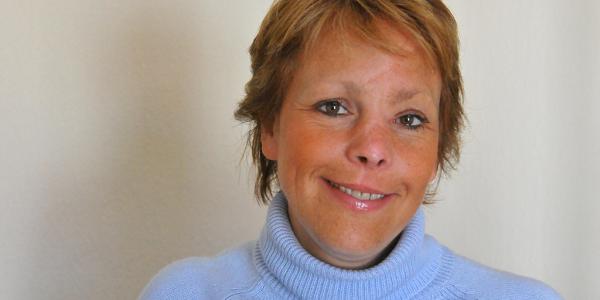
The Anxiety Of Looking Different
In 2002, Naomi Milward suffered ‘horrific’ injuries in a road accident. Then 31, with a successful career in the travel industry and ‘a great lifestyle’ before the accident, Naomi found ‘the hidden psychological impact was significantly harder to deal with than the very obvious physical one. Going out in public was a massive deal for me as I felt everyone was staring’.
Access to specialist support was virtually non-existent in Devon where Naomi still lives. At first, she was offered help from a counsellor who dealt with general issues, such as divorce. To get therapy for her specific concerns and difficulties, Naomi had to travel to London, often on public transport, which she found ‘very challenging. Being around strangers and social situations made me feel uncomfortable’.
Six years later, Naomi’s clinical psychologist introduced her to Dr Alyson Norman, Associate Professor of Clinical and Health Psychology at the University of Plymouth, who had devised the FaceIT programme in conjunction with the Centre for Appearance Research at the University of the West of England and the charity Changing Faces. For Naomi, who went through surgery for many years after the accident, the techniques she learnt in FaceIT sessions (then face to face,) were ‘invaluable’.
A word here about Changing Faces. I was lucky enough to meet and write about James Partridge, the late and greatly missed founder of the charity, back in the early 1990s. James had been in a car crash when he was 19 and at Oxford University. Remedial surgery left him with a patchwork quilt of skin grafts on his face. One of James’ goals, he told me then, was for women with visible facial differences to be able to walk up to a beauty counter, confident and unembarrassed, feeling they had every right to do so. So, when we launched our first Beauty Bible in 1996 with a publicity tour, Changing Faces was the charity we supported. We still do.
According to Dr Norman, “Visible difference covers a huge range of things, but there are probably four or five million people in the UK with a difference of some kind. Our research suggests that about 30 per cent of those people will suffer some degree of anxiety as a result. But we also know there is no strong correlation between the severity of someone’s visible difference and the anxiety they may experience – it is about each individual’s confidence level.’
‘FaceIT aims to do two things,’ Dr Norman explains. ‘To help people manage anxiety, and help them learn how to manage interactions with other people and deal with their reactions.’ James taught me to look him in the eye, not stare but not look away from his face. I didn’t find it easy the first couple of times but I practised and later, when we used to catch up over lunch, I truly didn’t notice it because I was talking to the man not his ‘visibly different’ face.
The FaceIT@home service, developed with specialist psychologists, is now available online to anyone in the UK with a mark, scar or condition on their face or body that makes them look different. (Some people I met at the charity had conditions such as a crowd of facial warts, a tangled mass of blood vessels, rosacea or red or purple birthmarks.)
Becky Hewitt, Chief Executive of Changing Face says ‘Clinicians can refer clients and individuals can sign up directly with Changing Faces to join the online programme’, which includes examples of easy to follow techniques that people can use to significantly improve their confidence in managing social and other challenging situations.
Naomi is particularly keen for FaceIT to be available to military veterans: ‘many live with visible differences and suffer from post-traumatic stress disorder, which I also experienced following the accident. I am confident that many people who are finding it difficult to obtain specialist support will benefit significantly.
*The image is of Naomi, ten years after her accident.
DISCLAIMER: The views, opinions and information expressed in this article and on Victoriahealth.com Ltd are those of the author(s) in an editorial context. Victoriahealth.com Ltd cannot be held responsible for any errors or for any consequences arising from the use of the information contained in this editorial or anywhere else on the site. Every effort is made by the editorial and content team to see that no inaccurate or misleading information, opinion or statement appear, nor replace or constitute endorsement from medical bodies or trials unless specified. Victoriahealth.com Ltd accept no liability for the consequences of any inaccurate or misleading data, information, opinion or statement. Information on Victoriahealth.com Ltd and in the editorials is provided for informational purposes only and is not intended as a substitute for the advice provided by your physician or other healthcare professional. You should not use the information on this website or in the editorials for diagnosing or treating a health concern or disease, or for the replacement of prescription medication or other treatment.